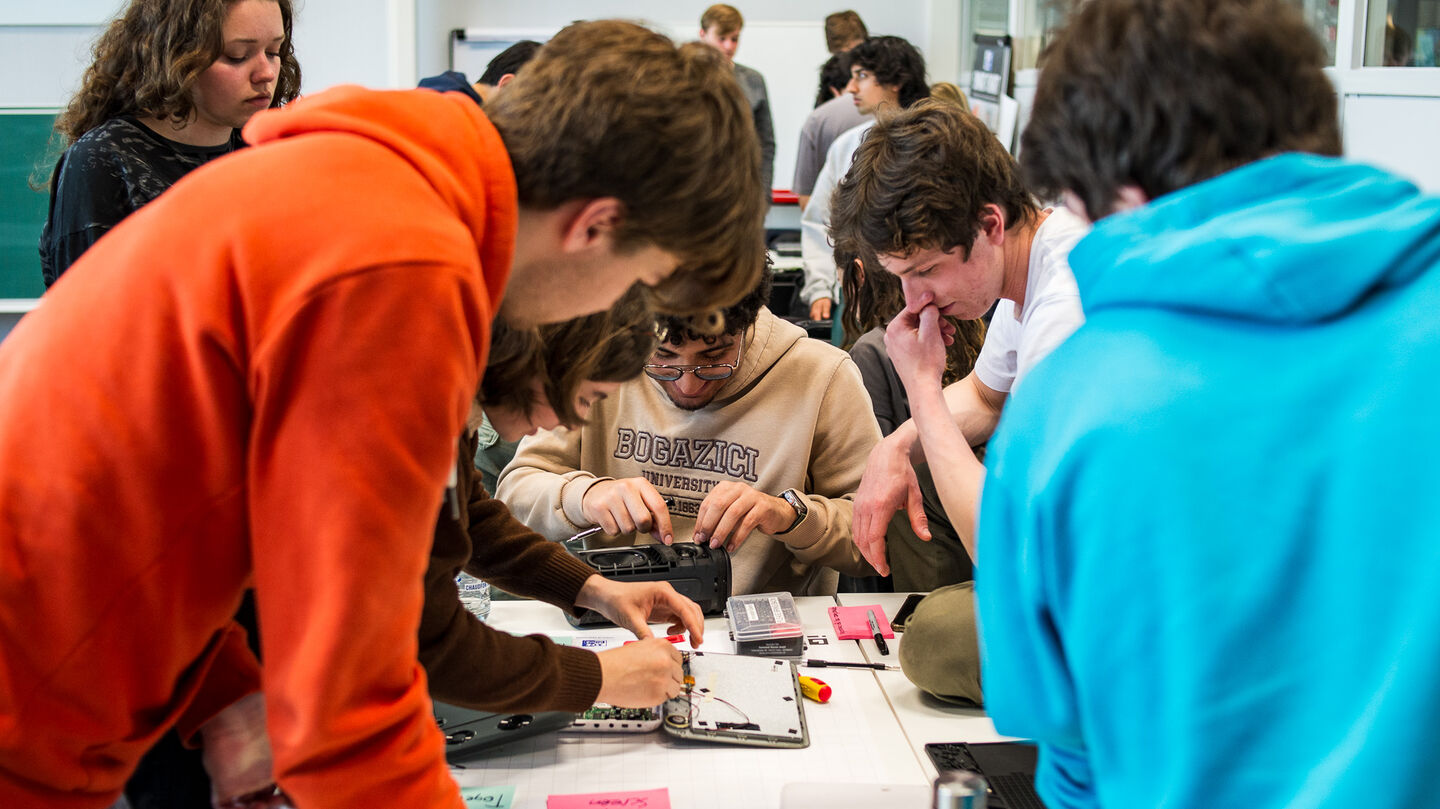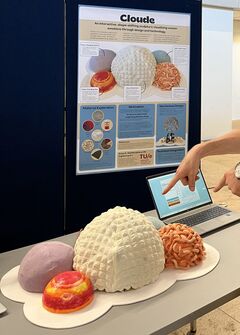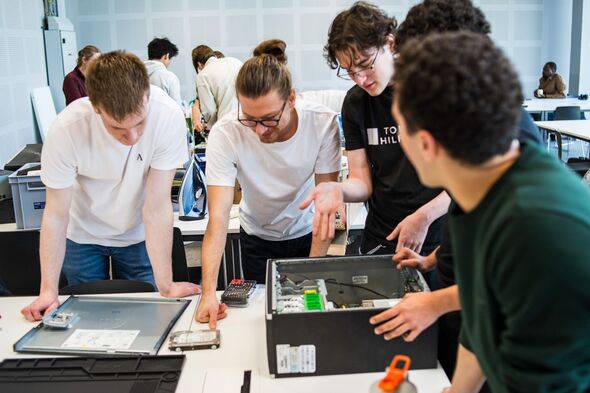
More freedom and choice in new course for all second-years
1,856 students, 80 lecturers and 115 tutors — all for one course. These are the figures for the first edition of Multidisciplinary CBL, the new university-wide course that is mandatory for all second-year bachelor’s students, regardless of their program.
The course is called Multidisciplinary CBL for a reason. Like Calculus in the first year, it’s a core course, which means all second-year students from every program take it together.
Previously, this was done under the course Engineering Design, which was usually held in Q1. But as part of the revamped Bachelor College, Engineering Design has been renamed Multidisciplinary CBL.
The change is not just in the name. The course has been thoroughly redesigned: students now have more freedom to choose topics that align with their study program and interests. “Almost everything is new, except our team,” says Bart van Esch, associate professor for the course.
Criticism
In the old Engineering Design course, all students were divided into groups of six, and each group received the same assignment. For example, they might build a remote-controlled device to collect tennis balls and rubber ducks in another building. In another year, students chose a physical disability and a sport, then designed something that would allow people with that disability to practice the chosen sport.
“A recurring point of criticism, from students as well as from departments, was that the assignments were too focused on just a handful of study programs,” Van Esch explains. “Students from Mechanical Engineering and Electrical Engineering often did well, but the assignments were less relevant for programs such as Data Science or Chemistry.”
That’s why Van Esch and his colleagues decided things had to change. “In the new course we’re offering not one but 25 projects,” he says. This way there’s something for everyone, and students can choose an assignment that matches their study program and interests.
Multidisciplinary
More projects also mean more organizational work. “It took a lot of effort to get all these projects off the ground,” Van Esch acknowledges. To safeguard the multidisciplinary aspect, each project is supervised by lecturers from at least two different departments. “In particular, the directors of education did a lot of lobbying to initiate projects and to encourage lecturers to participate,” he adds.
In total, 80 lecturers from across TU/e were involved. “These lecturers paired up and designed an assignment together, drawing on their different backgrounds.” The exact nature of each assignment was left open. The main requirement was that each project should be relevant to at least three study programs, so that multidisciplinary collaboration would also take place within the projects.
From doze-prevention to art
To match students’ diverse backgrounds and interests, the 25 projects are highly varied. Project 6, D-light, focuses on the human circadian rhythm and the influence of light. “Lectures start at 8:45 a.m., a time when most students are still in their ‘sleep phase’. And then most lecturers leave them sitting in the dark,” the project description notes. The assignment: come up with a lighting solution so students don’t doze off in dark lecture halls.
In project 24, Engineering Art, students use an engineering approach to create their own art. The form — for example, a sculpture or a short film — and the technique are up to the students. “This was a very popular project. In the end we didn’t have enough spots for everyone who signed up,” says Van Esch.
And in project 22, Artificial Tutors, the focus is — as the name suggests — on artificial tutors: smart digital tools that can support students in their learning process. Here the assignment could be, for example, to develop, test and implement an add-on for existing learning software that provides students with personalized hints at the right time.
From Q1 to Q4
Another important change is the timing of Multidisciplinary CBL. Instead of Q1, the course now takes place at the very end of the second year, in Q4. “Students have much more experience by the end of the second year,” Van Esch explains.
According to him, the involved lecturers also gave positive feedback on this. “You could say students in the third year have even more experience, but that year is dedicated to the Bachelor Final Project. So the course is perfectly placed now.”
Satisfied
Van Esch and his team are very satisfied with the first edition of Multidisciplinary CBL. “And the evaluations from all lecturers and tutors were without exception positive,” he says with satisfaction. “Our aim in adapting this course was to give students more choice. And many tutors wrote that this has increased students’ intrinsic motivation. We’re very happy about that.”
Van Esch does remain cautious, since the student evaluations still need to be analyzed. “There are always things that can be improved. We’ll use those lessons to make the next edition even better.”
This article was translated using AI-assisted tools and reviewed by an editor.



Discussion